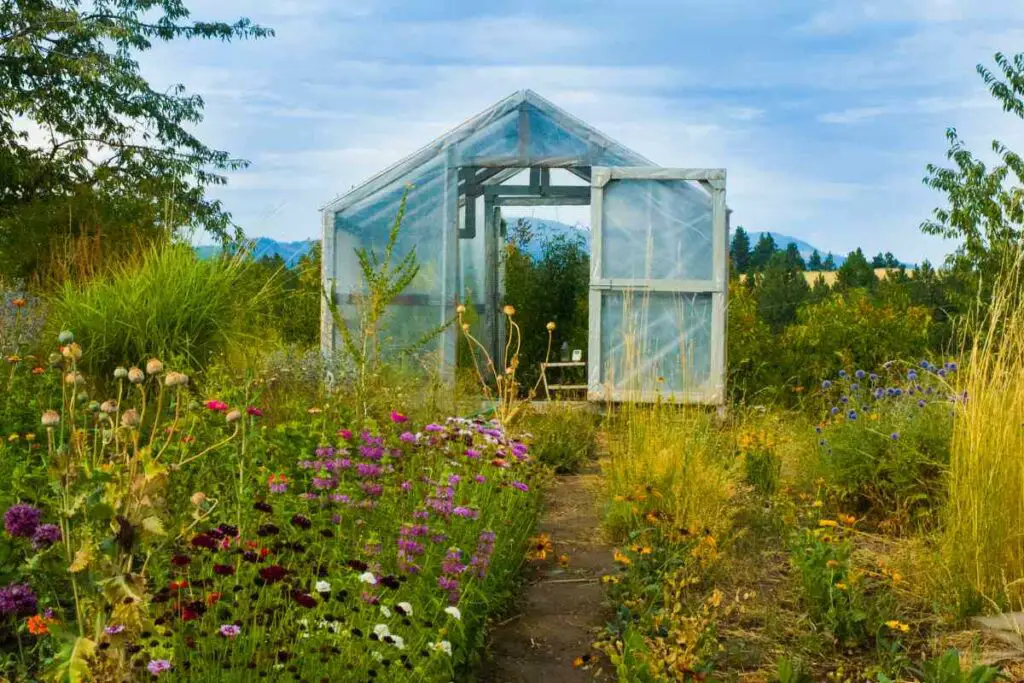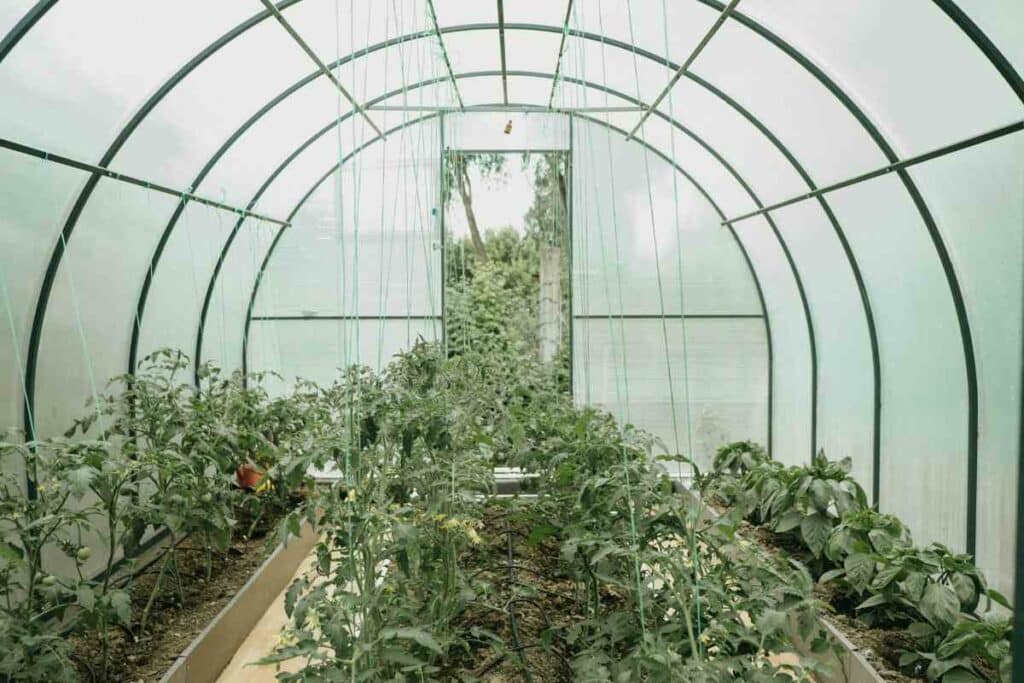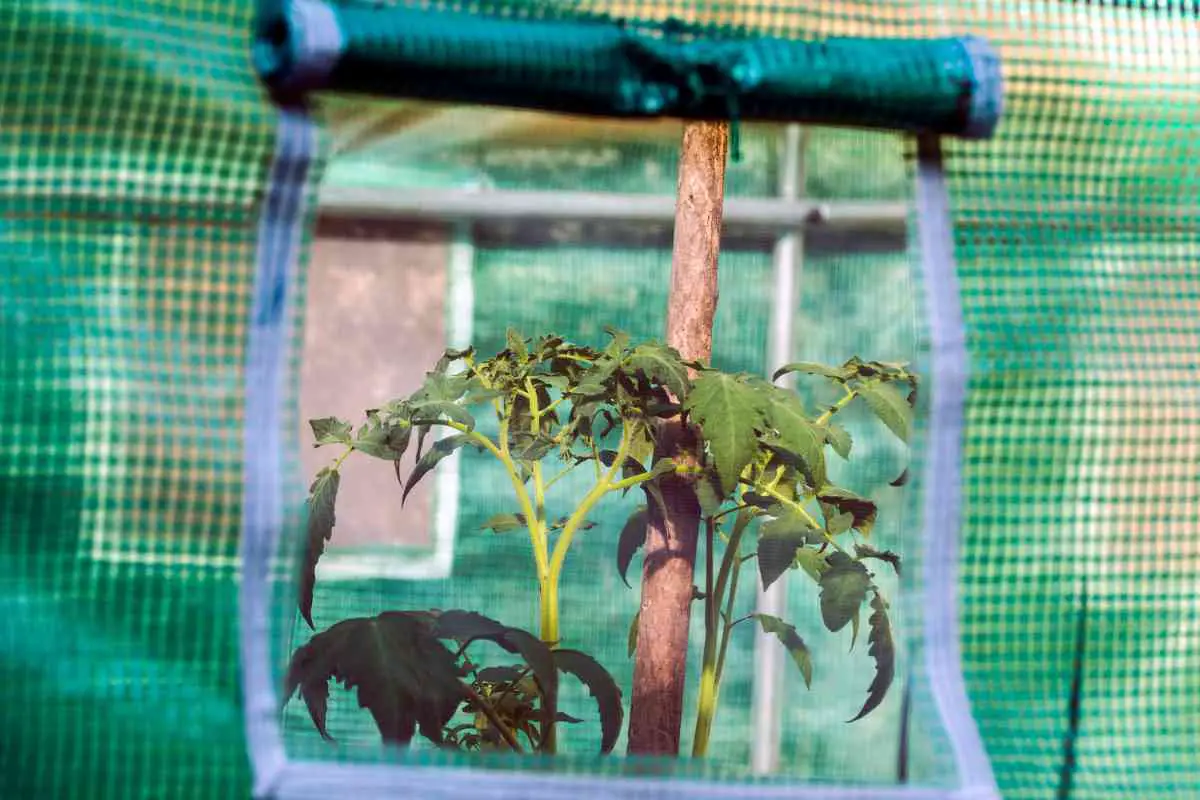In this guide, we explore some effective strategies and solutions to crank up the temperature in your grow tent to ensure a constant temperature for all year round plant growth.
Cold and winter conditions can sure put a damper on plant growth even those grown indoors.
Temperature extremes can stress your plants, slow down their growth or even cause tissue or cell damage (necrosis).
It is important to monitor and tailor the temperature inside your grow room to suit your plant needs.
Most plants can handle daytime temperatures between 70° and 80° Fahrenheit, and nighttime temperatures in the 55° and 60° Fahrenheit range.
But remember, these are general guidelines. Temperature requirements can vary depending on the specific crop and what stage of growth they are in.
Now, let’s talk about some strategies I have used that will get the temperature in your grow tent on point.
1. Insulate Your Grow Tent
When the winter winds start blowing, it’s high time to insulate your grow tent. We want to block any avenues of heat loss. Insulation is going to be your best bet.

This can be done by covering the tent walls with reflective or thermal blankets. Covering the tent with cut pieces of Styrofoam sheets can also do the trick.
If you are growing potted plants, wrap the pots with aluminum foil. And remember, don’t place the pots on cold floors or metal tables. Instead, put a polystyrene sheet between the floor and the pot, so they don’t touch that chilly surface.
While insulation will not actively heat the tent like a dedicated greenhouse heater will do, it does make other heating methods work like a charm helping retain heat during the cold winter months.
2. Lighting Solutions
Place the Grow tent in a well-lit area. Take advantage of the sun’s warmth by positioning your grow tent in an area that receives direct sunlight. Even during winter, the sunlight can help maintain favorable heat levels.
It’s the most cost effective method of maintaining a suitable growing temperature.
3. Keep Grow Lights On
Keep your grow lights running continuously for 24 hours. That way, the lights provide additional heat tackling any cold snaps head-on.
If possible, consider adding more grow lights. The extra heat generated by the light maintains favorable heat conditions in the tent.
Top Pick
RHS Heated Walkway
Editor’s Choice
SunStream
This can be costly, but my solution to that and not having a power source close by was to add a small solar panel to the side of the grow tent. It only cost me $199 and I can use it for years to come.
Plus, it can be used for other applications if I no longer use the grow tent. Like garden lighting for instance.
4. Choose HID Lighting for Winter
LED grow lights are ideal for warm summer months since they produce minimal heat. But HID lights generate more heat and can provide additional warmth during the cold winter months.
5. Utilize Compost as a Heat Sink
Compost serves as an excellent heat sink. It absorbs heat from the sun and retains it. The heat is then gradually released at night helping maintain ideal temperatures inside the tent.
6. Use Water Storage Barrels as a Heat Sink
Water barrels or tanks are effective at absorbing and retaining heat for extended periods. They are also known as “passive solar heaters.”
Passive solar heating involves collecting heat from the sun during the day and slowly releasing the stored energy during the night. This is usually done by water or other thermal mass capable of absorbing and holding heat for extended periods.
Position the water container in a position that receives ample sunlight during the day. Then move the container inside your grow tent at night. The heat is gradually released, maintaining the temperature within the tent.
It’s labor intensive but a free source of heat.
Opting for dark-colored containers can maximize the effectiveness of heat absorption with this method.

7. Day & Night Fan Controller
Automatic fan controllers allow users to set specific day and night temperatures.
The fans turn on and off based on the temperature settings, optimizing airflow within the grow tent. Fans are designed to automatically reduce their speed at lower temperatures.
This retains warmer air inside the tent.
8. Implement Supplemental Heating
When it comes to heaters, you want to make sure you pick the right one for the job. Consider the size of your tent and the plants temperature requirements.
There’s a huge number of heaters options to choose from as covered below;
Electric space Heaters
These babies are perfect for the wintertime. They use coil elements powered by electricity to warm up the air in your tent.
Set them up outside the tent and use a fan to blow that hot air right in.
Oil-Filled radiant Heaters
Oil-filled radiant heaters use oil and electricity to do their magic. The oil acts as a heat reservoir and heating agent.
These heaters hold on to that heat for longer, making them quite energy efficient.
Gas-powered Heaters
Top Pick
De’Longhi Oil-Filled Radiator
Editor’s Choice
Grow Lights for Indoor Plants
Typically, these heaters run on propane gas instead of electricity. They heat up quickly and require less maintenance as compared to oil-filled radiators.
Just remember, they produce CO2 emissions, so make sure you got good ventilation going on.
Ceramic Heaters
These bad boys use ceramic instead of coil heating elements to generate heat. They’re perfect for mini grow tents, like a 3×3 setup, and do not get as hot to the touch as coil elements do.
This makes them quite safe and energy efficient.
Position them outside the tent and use a fan or vent to circulate that warm air.
Tube Heaters
Tuber heaters are compact and versatile. You can position them wherever you want inside your tent where they will keep pumping out that heat.
They are also one of the most inexpensive options costing no more than 2p or 3 cents per day to run. Or using a solar panel, there free to run.
Hydronic or Aquarium Heaters
Aquarium radiant heaters heat water using a heat exchanger, then circulate that hot water through metal pipes in your tent keeping the plants cozy and warm.
Duct Fan Heaters
Duct fan heaters are top-notch as they cool and heat your grow room. They draw air from your home, pass it through a heat exchanger, and warm it up with gas or electricity.
Heating Mats
Heating mats of propagation mats are thin, flexible panels perfect for seed germination. Just place them at the bottom of your 6-pack starting trays or pots, where they’ll gently warm the roots.
They take up no room at all and use very low wattage.
To Wrap Up
Now, it’s time to get experimental and see what works best for your plants and setup.
The option you choose will depend on your budget, the practical side of installing them and the room you have in your grow tent.
But when you’re going the heater route, keep a close eye on that temperature. We do not want things getting too hot now, do we?
Grab yourself a trusty thermometer or thermostat and make sure you’re in that sweet spot to avoid overheating.
Oh, and here’s another tip: keep that hot air from blowing straight onto your precious plants. Hot air can cause the plant leaves to dry out.
So, position the heater so it does not blow hot air directly on the plant.
By putting these strategies into practice and keeping that temperature just right, you will be creating a paradise for your plants to thrive.
